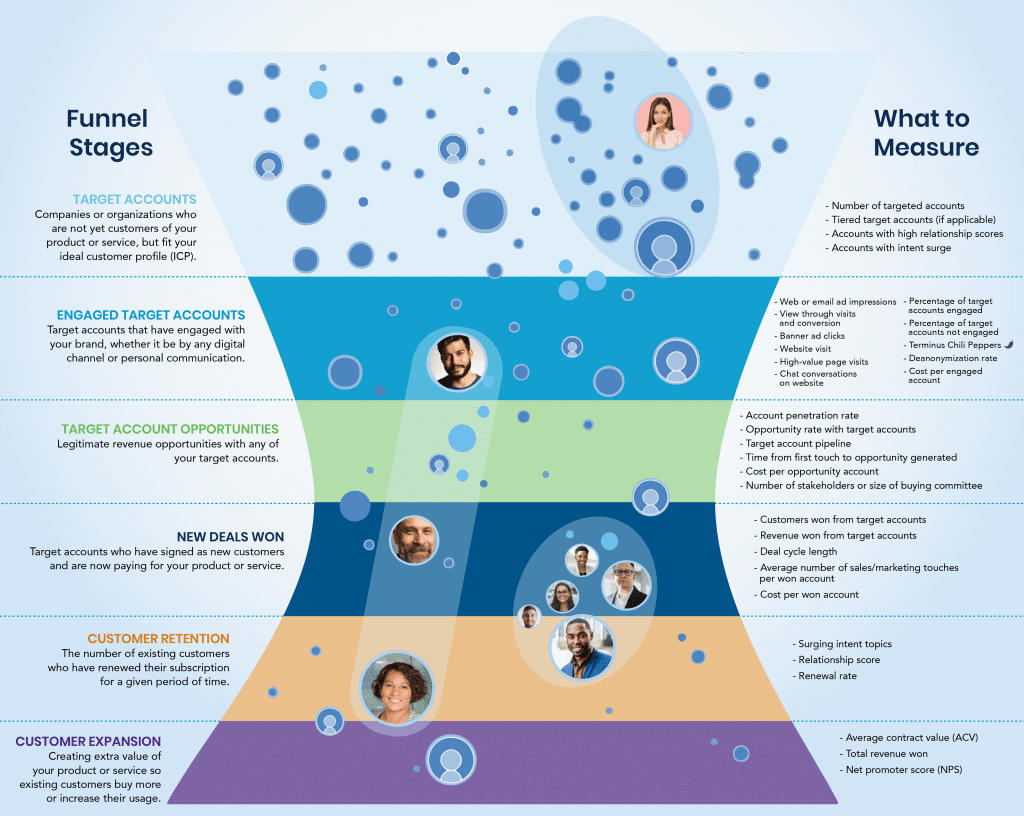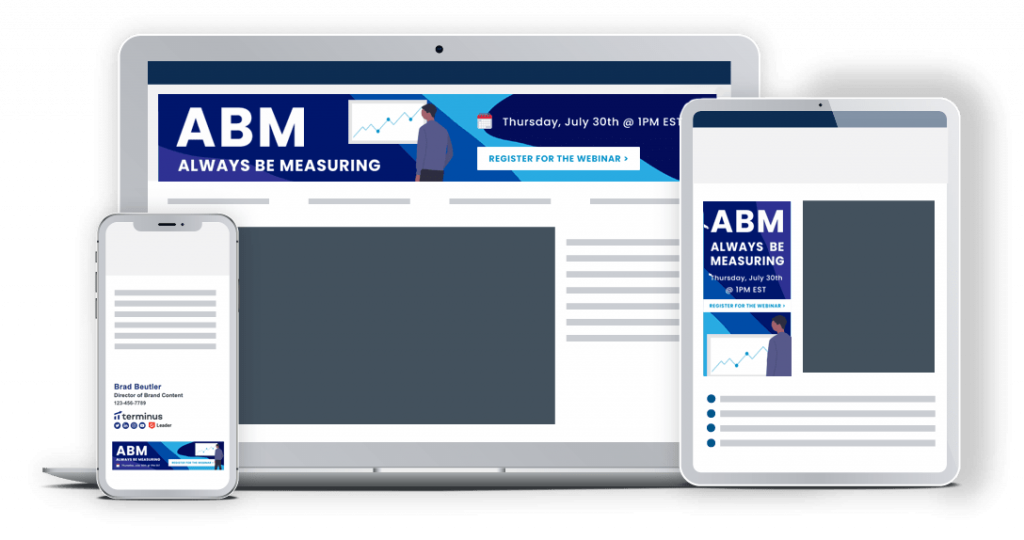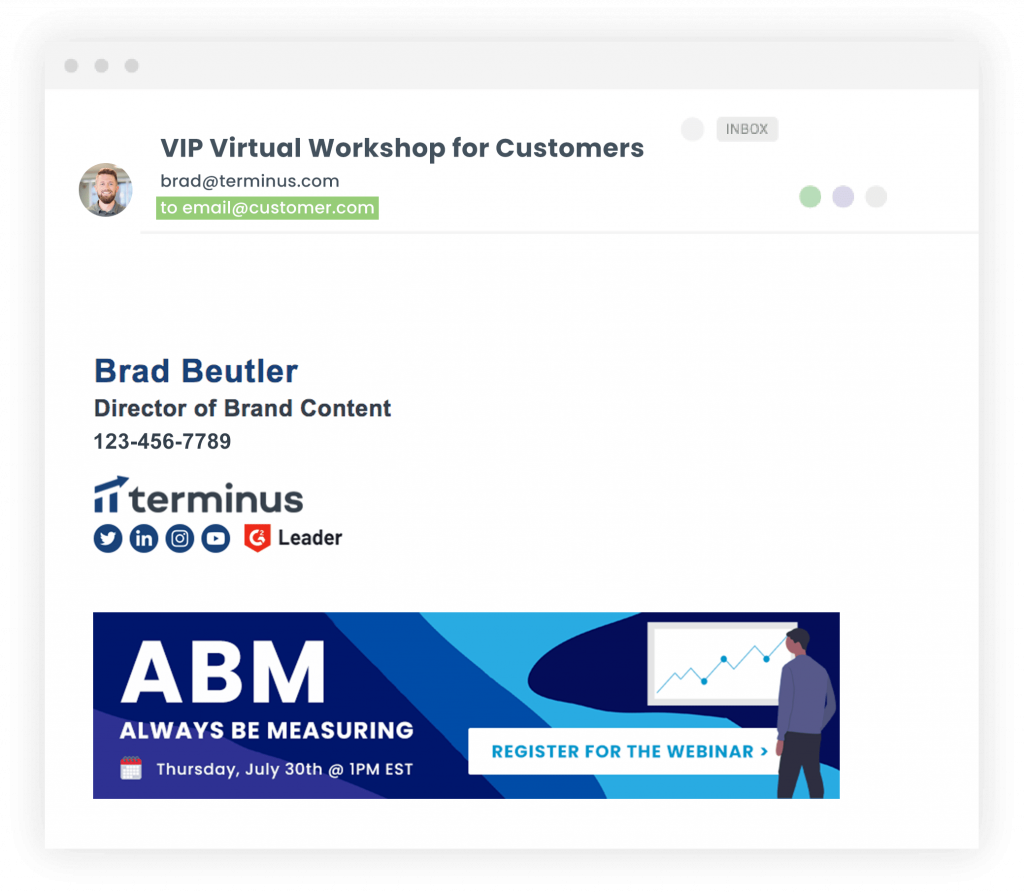A full-funnel approach to account-based marketing, which prioritizes your current customers while still growing the top of the funnel, is the future of marketing. We recently laid out a visual representation of what “full funnel” truly means in this infographic, broken down by funnel stages and relevant KPIs. And now we’re taking it one step further by diving into specific plays your team can execute for each stage.
For this post, we’ll focus primarily on customer retention (see our full funnel visual below for reference).

We’re starting here because most organizations rarely apply the full force of an account-based marketing strategy to their customer base. However, this is where we’re seeing the biggest shift in marketing. Today’s most successful marketers know that customer retention and expansion is the best way to achieve scalable revenue growth YoY. Customer acquisition is expensive, but losing customers is even more costly.
It’s one thing to write out this idea in a blog post – and it’s another to put it into action and document best practices! That’s precisely what we did below, as you’ll find a specific use case we executed ourselves and a framework for success. Hopefully this can serve as a starting point for your own retention marketing strategy.
Drive Renewals and Utilization with Virtual Workshops
When to Consider This Play:
If you have a list of customer accounts who are potentially at-risk for churning, you should leverage the full force of an account-based marketing strategy. This means creating target account lists based on churn signals, engaging decision makers and end users with meaningful experiences, activating your support and success teams with the proper tools and insights, and measuring your success.
How We Executed This Play Ourselves:
One cost-effective approach to customer retention that Terminus takes is with customer success workshop programs oriented around regular product releases and strategy sessions. This session should include senior leadership, their success manager, and potentially a representative from product marketing. We use this as an opportunity to build relationships with our customers and to help them build relationships with other Terminus users. You’ll want to create cohorts of 5-10 customers in non-competing spaces so that when you conduct the working sessions, your customers can share their ideas openly in a more intimate, personal environment.
Data Available to Use:
The Terminus platform works with your CRM to bring additional firmographics and intent to your accounts so that you can easily filter based on relevant criteria. This will help determine which customer accounts you want to focus on and invite first!
This natively includes:
- Industry
- Revenue range
- Company size
- Bombora intent
- Relationship score
- Web engagement data
You can also use any field object you might also have as part of your CRM, which might include:
- Opportunity stage
- Renewal date
- Net Promoter Score (NPS)
- Customer Lifetime Value (CLV)
- Product usage
How the TEAM Framework Can Help Guide You
Target:
Target the right accounts by building customer segments based on relevant data. For example: create segments based on industry, revenue, CLV, intent, engagement, relationship score, and product usage. You’ll want to take special care to identify customers with a high customer lifetime value who are also demonstrating low product usage, low relationship scores, low NPS, or intent for a competitor.
Create working groups that match customers with a high NPS with those with a low NPS and those with high utilization with those with low utilization. Your goal is to have happy customers reinforce the value of your product with those who might be struggling.
During this session, you can present new features or product offerings, while also sharing ways customers could be using your product further. Come prepared with a clear plan to drive a specific utilization action and ask your customer ambassadors to share a few things that reinforce that point. Including senior leaders can also add authority to your session and ensure customers feel seen by your organization.
Engage:
Leverage a multi-channel approach to engage the full buying center of your account for maximum coverage. We recommend using a combination of cookie-based digital ads (to get them at home), LinkedIn ads, email signature marketing, web personalization, and outreach from your customer success teams.

Have your design team create a template that you can easily use across your digital footprint that includes the account name or logo and the Desired Business Outcome (DBO) your target account is trying to achieve. Why did they originally buy this product? What were they trying to achieve? How can you communicate your value, as it relates to a specific KPI you can hang your hat on?
Your promotional materials should be extremely goal-oriented and you should ‘surround’ your account with this type of messaging so you are tying your solution to their objectives. Include the date and time on the ad to drive additional urgency and recall.

Activate:
Activate your sales and success teams by aligning their outreach with your marketing campaigns. Work with them to refine your target account lists per program and build an outbound marketing campaign that will reach every decision maker – not just the end user. While not all may attend, you will want every representative from the buying center to know your value.
We recommend leveraging the following data types to help build the content for your session and better prepare for helping at-risk customers.
- Intent data – Are the researching competing services or brands? If so, what can you present in this session to make you stand out from your competition?
- Engagement data – Have they seen the ads related to the business outcome you are trying to help them achieve? Are you hitting all of the right people with the right message?
- Relationship score – Are you in regular contact with multiple parts of the buying center?
- NPS – Are they satisfied with your services? Do they feel positively about your brand or their success manager?
- Product usage – What features have they adopted? How many users are signed up? Is there something more success could be doing to help?
Measure:
Measurement is an important and obvious part of any customer marketing program. The most important KPI to measure is churn rate. To calculate your churn rate, divide churned customers over a period of time by the number of customers you had at the start of that period.
Compare this average to an average based on customers who have attended these sessions. Use this as your benchmark each quarter as you build out new customer marketing programs.
Other KPIs to consider:
- Product utilization – you’ll want both to improve usage rates and adoption of certain features which may be housed separately in a product utilization solution like Pendo or MixPanel.
- Relationship score – this is how we measure penetration into the buying center. You will also want multiple end users who understand the value of your product.
- Revenue – the most important KPI to track of all. Recurring revenue (and Customer Lifetime Value) should grow year over year.
As we “talk this talk” we’re also making sure we “walk the walk” ourselves. That’s the whole idea behind this blog series and sharing specific plays we run for each stage of our own account-based marketing strategy. Stay tuned for our next topic in this series: customer expansion.
Until then, check out our recent ebook about customer retention trends and how they relate to ABM.